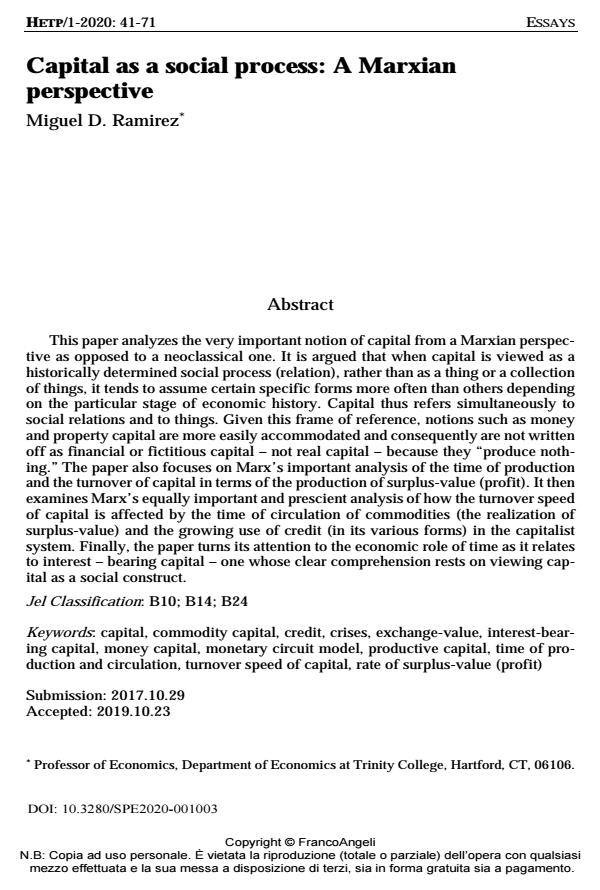Capital as a social process: A Marxian perspective
Titolo Rivista HISTORY OF ECONOMIC THOUGHT AND POLICY
Autori/Curatori Miguel D. Ramirez
Anno di pubblicazione 2021 Fascicolo 2020/1
Lingua Inglese Numero pagine 31 P. 41-71 Dimensione file 222 KB
DOI 10.3280/SPE2020-001003
Il DOI è il codice a barre della proprietà intellettuale: per saperne di più
clicca qui
Qui sotto puoi vedere in anteprima la prima pagina di questo articolo.
Se questo articolo ti interessa, lo puoi acquistare (e scaricare in formato pdf) seguendo le facili indicazioni per acquistare il download credit. Acquista Download Credits per scaricare questo Articolo in formato PDF

FrancoAngeli è membro della Publishers International Linking Association, Inc (PILA)associazione indipendente e non profit per facilitare (attraverso i servizi tecnologici implementati da CrossRef.org) l’accesso degli studiosi ai contenuti digitali nelle pubblicazioni professionali e scientifiche
This paper analyzes the very important notion of capital from a Marxian perspective as opposed to a neoclassical one. It is argued that when capital is viewed as a historically determined social process (relation), rather than as a thing or a col-lection of things, it tends to assume certain specific forms more often than others depending on the particular stage of economic history. Capital thus refers simulta-neously to social relations and to things. Given this frame of reference, notions such as money and property capital are more easily accommodated and conse-quently are not written off as financial or fictitious capital - not real capital because they produce nothing. The paper also focuses on Marx’s important analy-sis of the time of production and the turnover of capital in terms of the production of surplus-value (profit). It then examines Marx’s equally important and prescient analysis of how the turnover speed of capital is affected by the time of circulation of commodities (the realization of surplus-value) and the growing use of credit (in its various forms) in the capitalist system. Finally, the paper turns its attention to the economic role of time as it relates to interest - bearing capital - one whose clear comprehension rests on viewing capital as a social construct.
Parole chiave:Capital, commodity capital, credit, crises, exchange-value, interest-bearing capital, money capital, monetary circuit model, productive capital, time of production and circulation, turnover speed of capital, rate of surplus-value (profit)
Jel codes:B10; B14; B24
Miguel D. Ramirez, Capital as a social process: A Marxian perspective in "HISTORY OF ECONOMIC THOUGHT AND POLICY" 1/2020, pp 41-71, DOI: 10.3280/SPE2020-001003